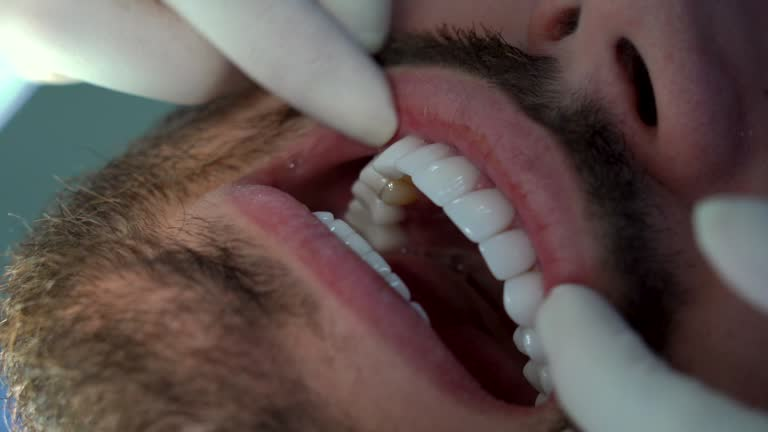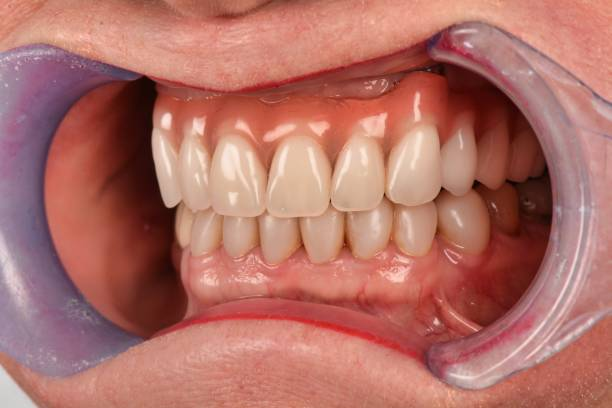
When it comes to enhancing your smile, dental veneers remain one of the most sought-after cosmetic treatments. But like all dental restorations, veneers aren't built to last forever. Over time, they can lose their luster, become damaged, or simply stop aligning with your evolving aesthetic goals. That’s where replacing veneers comes into play.
Whether you're dealing with worn-out veneers or considering a smile upgrade, this in-depth Simply Veneers guide covers everything you need to know—signs it's time for a replacement, what the process looks like, how much it costs, and how to care for your new set.
Ready to reclaim a radiant, confident smile? Let’s get started.
Dental veneers are ultra-thin shells—usually made from porcelain or composite resin—custom-crafted to bond onto the front surface of your teeth.
Think of them as cosmetic covers for a more symmetrical, bright, and polished smile. They’re a go-to solution for hiding chipped, stained, misaligned, or uneven teeth.
People often choose veneers for their transformative power. They're fast, effective, and look incredibly natural.
Veneers allow individuals to reinvent their smiles without undergoing lengthy orthodontic treatments... which is why they’re so popular among celebrities and professionals alike.
On average, porcelain veneers last between 10 to 15 years, while composite ones offer a shorter life span—usually 5 to 7 years.
Of course, longevity depends heavily on care and lifestyle choices.
Chips, fractures, or hairline cracks—no matter how small—can expose the underlying tooth or ruin the look. If it looks off, it probably is.
While porcelain veneers are stain-resistant, the bonding material underneath can darken over time, especially with heavy coffee or wine habits.
When your gums recede, the edge of the veneer becomes visible—compromising both function and aesthetics.
Ever felt something shift when chewing? A loose veneer isn’t just uncomfortable—it’s a dental emergency waiting to happen.
Uneven pressure or discomfort when biting down could indicate an underlying veneer issue... or worse, tooth misalignment.
Like any well-used item, veneers wear down over time—especially if you’re not gentle with your teeth.
Bruxism is the enemy of veneers. Constant grinding causes micro-fractures that eventually lead to veneer failure.
Over time, the adhesive that bonds veneers weakens, leading to separation, staining, or decay at the margins.
Old veneers can allow bacteria to seep into the gaps—causing decay and cavities underneath.
Worn veneers simply don’t look good. You’ll notice your smile becoming dull, uneven, or discolored.
Neglecting veneer replacement can leave your natural tooth vulnerable to chips and fractures.
Small chips or stains might be polished or patched—but only temporarily. Think of it as patching a hole in a tire. Sometimes, it’s still going to need to be to replaced.
If your veneer is cracked, loose, or significantly discolored... replacement is inevitable.
Your dentist will assess your current veneers, oral health, and desired results. Photos and X-rays may be taken.
Gently and precisely, your old veneers will be removed—preserving as much natural tooth structure as possible.
This step ensures there’s no decay or damage beneath the old veneer. If there is, it must be treated first.
A new set of impressions (digital or traditional) will help craft your custom veneers with exact precision.
Once ready, your new veneers are placed, checked for fit and aesthetics, then permanently bonded using a dental adhesive.
Most patients report little to no discomfort. The process is straightforward, especially for experienced providers.
Local anesthesia ensures you remain pain-free throughout. Some practices even offer sedation options for anxious patients.
Your teeth have already been shaped during the first procedure—so no additional enamel removal is typically needed.
With better insights into what worked (and what didn’t), your new veneers can be optimized in shape, fit, and color.
The cost generally ranges between $800 and $2,500 per tooth—depending on the material and your location.
Most insurance plans consider veneers cosmetic, so coverage is rare. However, if damage occurred due to trauma or medical reasons, partial coverage may apply.
Bring your dental history and discuss your goals clearly—photos of your desired smile help too!
Customization is key. Be vocal about what you love—and don’t love—about your current smile.
Feature | Porcelain | Composite |
Durability | 10-15 years | 5-7 years |
Stain Resistance | High | Moderate |
Cost | Higher | Lower |
Appearance | More natural and translucent | Slightly less aesthetic |
Porcelain wins this round—hands down. It’s stronger, more durable, and better mimics natural enamel.
Procrastination leads to preventable damage and higher costs.
Cheap veneers often result in poor fit, unnatural appearance, and early failure.
They’ve seen it all. Trust their judgment—it can save your smile (and wallet) in the long run.
Regular visits help detect early issues before they become bigger problems. Prevention is always better than cure...
At Simply Veneers in Newport Beach, California, we understand that replacing veneers is both an art and a science. We cater to detail-oriented clients who expect flawless outcomes—and we proudly deliver.
With top-tier ceramists and a team committed to communication, precision, and results, Simply Veneers offers a range of services that ensures each smile makeover is personal, artistic, and successful.
If you’re in or near Orange County, Los Angeles, Long Beach, Riverside, San Bernardino, or Ventura, reach out to us. Your dream smile is closer than you think!

Replacing veneers isn’t just a touch-up—it’s a renewal of confidence, comfort, and personal expression. While veneers don't last forever, knowing when and how to replace them is key to maintaining a radiant smile for years.
And when you’re ready to make that move, trust a team that treats artistry as seriously as dentistry... Schedule with Simply Veneers.

